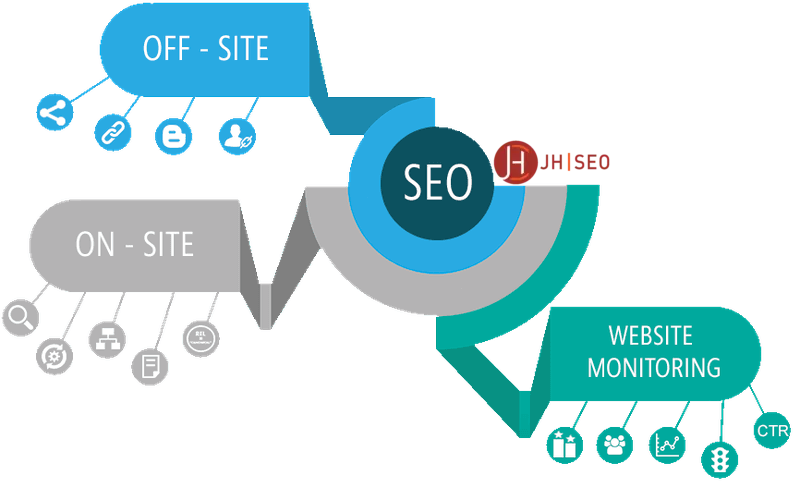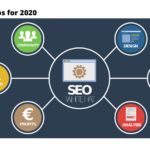In today’s digital world, SEO is crucial, especially for multi-location businesses. These organizations must build a strong online presence and ensure each location stands out in its local market. Local SEO helps them connect with local customers searching for their services.
The challenges of multi-location SEO include managing consistent business information, creating unique content for each location, and ranking well in local searches. However, with the right SEO strategy, multi-location businesses can boost search rankings, attract more local customers, and dominate local search results. Location SEO enables franchises to turn these challenges into opportunities and lead in their local markets.
What is Local SEO and Why Does It Matter?
Local SEO optimizes a business’s online presence to increase visibility in local searches. Unlike traditional SEO, which targets broad audiences, local SEO focuses on attracting nearby customers searching for products or services. For multi-location businesses, this means customizing efforts to ensure each branch ranks well in its local market.
Local SEO connects businesses with nearby consumers at the moment they are seeking solutions. For multi-location businesses, the benefits are significant:
- Improved Visibility in Local Searches: By optimizing for location-specific keywords, businesses can appear prominently in local search results.
- Attracting Local Customers: High visibility ensures that customers in a specific area find the closest business location, driving foot traffic and sales.
- Enhanced Search Rankings: A well-executed local SEO strategy can help businesses rank higher in search engines, making them the go-to choice for local consumers.
As consumer behavior shifts toward mobile and voice search, multi-location SEO becomes even more critical. Local searches often happen on the go, with people looking for immediate answers like “coffee shop near me” or “24-hour pharmacy.” For franchises, this means that each location must have its location SEO optimized to capture these intent-driven queries.
In a world where over 46% of Google searches are local, a robust SEO strategy tailored to local searches is no longer optional. It’s a competitive necessity for multi-location businesses aiming to dominate their local markets.
How Do Multi-Location Businesses Approach Local SEO?
Managing local SEO for multi-location businesses involves overcoming unique challenges and implementing targeted solutions. Each location must have a strong, consistent online presence while differentiating itself in its local market. This requires addressing specific hurdles and creating strategies tailored to each franchise’s needs.
Challenges Multi-Location Businesses Encounter
Multi-location SEO brings complexities that single-location businesses often do not face. Key challenges include:
- Managing Location-Specific Content: Each business location needs unique, engaging content to resonate with local customers while avoiding duplicate content issues that can negatively impact search rankings.
- Ensuring NAP Consistency Across Platforms: Inconsistent NAP (Name, Address, Phone) information across directories, Google My Business, and other platforms confuses search engines and erodes trust with local customers.
- Competing for Visibility in Local Searches: Each location must vie for visibility in crowded local markets, which can be especially challenging for businesses with multiple branches in the same region.
Strategies Tailored to Franchises
Franchises and other multi-location businesses can overcome these challenges by implementing a comprehensive SEO strategy focused on maximizing local search visibility.
- Create and Optimize Location Pages: Develop dedicated pages for each business location with unique content, location-specific keywords, and essential information like hours, directions, and customer reviews.
- Leverage Google My Business for Each Location: Claim and optimize a Google My Business profile for every location, ensuring accurate NAP details and category selections.
- Encourage Customer Reviews: Actively solicit and respond to reviews from local customers to build trust and boost search rankings in local results.
- Use Structured Data Markup: Implement schema markup to provide search engines with clear, location-specific data for each branch.
- Centralized SEO Oversight with Localized Flexibility: Maintain a centralized framework for brand consistency while allowing local managers to tailor content and promotions to their markets.
With these strategies, multi-location businesses can overcome challenges and position themselves to capture more local search traffic, driving growth and customer engagement in each location.
How to Optimize For Local Search Results?
Optimizing for local search is crucial for multi-location businesses to attract more traffic and local customers. A solid local SEO strategy boosts visibility, increases customer engagement, and drives foot traffic. Using tools like Google My Business (GMB) and proven tactics can greatly improve search rankings.
The Role of Google My Business (GMB) in Local Rankings
Google My Business is a cornerstone of local SEO. For multi-location businesses, GMB allows each branch to have a distinct online profile, ensuring accurate information for search engines and local customers. Key benefits of optimizing GMB include:
- Enhanced visibility in Google’s local pack and maps.
- Easier access to vital details like address, phone number, and operating hours for local searches.
- A platform for managing reviews and interacting with customers.
Key Steps to Improve Visibility in Local Search
1. Leverage Location-Specific Keywords
- Conduct keyword research to identify terms relevant to each location, such as “best pizza in [city]” or “affordable gym near [neighborhood].”
- Integrate these keywords into location pages, meta descriptions, and GMB profiles to help search engines connect your business with local customers.
2. Generate and Manage Online Reviews
- Encourage satisfied customers to leave positive reviews on GMB, Yelp, and other platforms.
- Respond to reviews—both positive and negative—to show engagement and build trust.
- Reviews play a significant role in search rankings, making them a critical part of any local SEO strategy.
3. Build High-Quality Local Backlinks
- Partner with local businesses, organizations, or news outlets to earn backlinks that enhance your domain authority.
- Sponsor local events or participate in community activities to secure mentions and links on reputable local websites.
- Backlinks signal to search engines that your business is a trusted authority in its area.
By focusing on these strategies, multi-location businesses can significantly improve their location SEO and dominate local search results, ensuring they remain top-of-mind for local customers.
Why Multi-Location SEO Requires A Unique Strategy
For multi-location businesses, achieving success in local SEO requires a tailored approach that balances the needs of individual locations with the goals of the overarching brand. Unlike single-location businesses, multi-location SEO involves managing diverse markets, varying customer bases, and distinct competition levels. To meet these challenges, businesses must adopt a strategic mix of centralized control and localized customization.
Centralized vs. Decentralized SEO Approaches
A key decision for multi-location businesses is whether to centralize or decentralize their SEO strategy:
- Centralized SEO: This approach involves managing SEO efforts, such as content creation and technical optimization, from a single headquarters. It ensures consistency in branding, messaging, and compliance across all locations.
- Decentralized SEO: In this model, individual locations or regional managers handle their SEO efforts. This allows for hyper-local optimization but risks inconsistencies that could confuse search engines or alienate local customers.
The most effective strategies often blend these approaches, with the central team providing templates, guidelines, and tools while allowing local managers to adapt content and promotions to their specific markets.
Tools and Techniques for Managing SEO Across Multiple Locations
Managing multi-location SEO at scale requires leveraging the right tools and techniques. These can include:
- SEO Management Platforms: Tools like BrightLocal or Yext help ensure NAP consistency, monitor reviews, and track search rankings for each location.
- Content Management Systems (CMS): A robust CMS allows centralized teams to maintain control over branding while empowering local teams to update location-specific information.
- Analytics Tools: Google Analytics and Google Search Console provide insights into the performance of individual locations, enabling data-driven decisions for local SEO improvements.
Importance of a Unified Brand Presence with Location-Specific Nuances
A cohesive brand presence is critical for maintaining trust and recognition, but multi-location businesses must also adapt to the unique needs of each market. This involves:
- Consistent Branding: Ensure all locations use the same logos, colors, and messaging to strengthen brand identity.
- Location-Specific Content: Create content tailored to local events, culture, and customer preferences while maintaining a unified tone.
- Personalized Customer Engagement: Use GMB profiles, local promotions, and reviews to foster connections with local customers.
By adopting a location SEO strategy that balances uniformity with local relevance, multi-location businesses can maximize their visibility in local searches, boost their search rankings, and build stronger relationships with their diverse customer base.
The Role Of Location Pages In Multi-Location SEO
Location pages are a cornerstone of any effective multi-location SEO strategy. These pages are designed to provide local customers and search engines with detailed, location-specific information about a business. For multi-location businesses, well-optimized location pages help ensure that each branch or franchise ranks prominently in local searches, driving both online and offline engagement.
What Are Location Pages, and Why Are They Essential?
A location page is a dedicated webpage for a specific business location. These pages help businesses target their local audience by including relevant information tailored to that area. For example, a location page for a restaurant chain might include the menu, operating hours, and directions for a specific branch.
Location pages are essential because they:
- Improve Local Search Rankings: By including local keywords and relevant details, these pages signal to search engines that your business is highly relevant to specific queries.
- Enhance User Experience: They provide local customers with the information they need, such as contact details, services offered, and directions, all in one place.
- Build Trust and Engagement: When optimized effectively, location pages can attract more traffic, generate leads, and convert local searches into sales.
Best Practices for Designing High-Performing Location Pages
1. Include Unique Content for Each Location
- Avoid duplicate content by crafting unique descriptions of each location’s services, staff, and local highlights.
- Incorporate location-specific keywords naturally to help the page rank for local SEO queries.
2. Integrate Maps, Hours, and Contact Information
- Embed a Google Maps widget to make it easy for local customers to find directions.
- Display operating hours, phone numbers, and email addresses to ensure accessibility.
- Keep all details consistent with the business’s Google My Business profile to build trust with both users and search engines.
3. Utilize Structured Data Markup
- Implement schema markup to provide search engines with precise details about the business location, such as its address, hours, and services.
- Structured data helps improve the page’s visibility in local searches and can increase the chances of being featured in rich snippets or the local pack.
How to Track Success In Multi-Location SEO?
Measuring the performance of your multi-location SEO strategy is essential to ensure that your efforts are yielding tangible results. For multi-location businesses, tracking success involves monitoring a mix of location-specific metrics and overall trends to fine-tune strategies. By evaluating the right data, businesses can identify what’s working, address weak points, and maintain a strong presence in local searches.
Key Metrics to Measure Local SEO Performance
Tracking the following metrics is crucial for evaluating the effectiveness of your location SEO:
1. Organic Traffic by Location
- Analyze how much traffic each location page is generating from search engines.
- Look for trends in organic traffic growth, which indicate improved visibility in local searches.
- A drop in traffic might signal issues with content, technical SEO, or competition in that market.
2. Local Search Rankings
- Monitor the rankings of each location for targeted local keywords.
- Pay attention to how often your locations appear in the local pack or map results, as these are prime spots for attracting local customers.
- Use tools like Google Search Console to track rankings for individual queries tied to specific locations.
3. Engagement Metrics on Location Pages
- Assess metrics such as bounce rates, time spent on a page, and click-through rates for each location page.
- High engagement suggests that your pages are providing the right information and meeting user needs.
- Track conversion rates, such as clicks to call, direction requests, or form submissions, to gauge customer action.
Tools to Streamline Tracking and Reporting for Multiple Locations
Managing and analyzing performance for multiple locations can be complex, but the right tools make it more manageable. Here are some essential tools for multi-location businesses:
- Google Analytics: Provides insights into organic traffic, engagement metrics, and user behavior on location pages.
- Google My Business Insights: Offers data on how often your locations appear in searches and how local customers interact with your GMB profiles.
- SEO Management Platforms: Tools like BrightLocal and Moz Local help track local search rankings, audit NAP consistency, and monitor online reviews across all locations.
- Keyword Tracking Software: Platforms like SEMrush or Ahrefs allow businesses to track keyword performance for each location, identifying opportunities to improve search rankings.
- Custom Dashboards: Use tools like Data Studio to create centralized dashboards that compile data from various sources for easy reporting and decision-making.
By focusing on these key metrics and leveraging robust tools, multi-location businesses can gain valuable insights into their local SEO performance. Tracking these data points ensures that each location remains competitive in its market, delivering consistent results across all regions.
Common Pitfalls In Multi-Location SEO And How To Avoid Them
For multi-location businesses, navigating the complexities of local SEO requires careful planning and execution. Even with a strong SEO strategy, there are common pitfalls that can undermine efforts to rank higher in local searches and engage local customers. By understanding these challenges and implementing proactive solutions, businesses can avoid losing ground in competitive markets.
1. Neglecting Location-Specific Content
A common mistake is treating all location pages as identical, which can dilute their effectiveness in targeting local searches. Each location operates in a unique market, and failing to tailor content for these differences can result in poor search rankings.
How to Avoid It:
- Create unique, localized content for each location page. Highlight specific services, staff, community involvement, and promotions that appeal to the area’s audience.
- Use location-specific keywords naturally throughout the content to improve visibility in search engines.
- Incorporate local imagery and testimonials to further personalize the experience for local customers.
2. Inconsistent Business Information Across Directories
Inconsistent NAP (Name, Address, Phone number) information is another frequent issue for multi-location businesses. Discrepancies across directories, websites, and Google My Business profiles confuse both search engines and potential customers, leading to lower search rankings and lost trust.
How to Avoid It:
- Use tools like Yext or BrightLocal to audit and manage listings across all platforms.
- Regularly update business information to reflect changes in hours, addresses, or contact details.
- Maintain a centralized database for all NAP data to ensure consistency across locations.
3. Overlooking User-Generated Content Like Reviews
User-generated content, particularly reviews, is critical for building trust and improving visibility in local searches. Businesses that neglect reviews miss out on opportunities to engage with local customers and boost their credibility with search engines.
How to Avoid It:
- Actively encourage satisfied customers to leave reviews on platforms like Google, Yelp, and Facebook.
- Respond to all reviews promptly, addressing complaints and thanking customers for positive feedback.
- Use customer feedback to identify areas of improvement and highlight strengths in marketing campaigns.
Proactive SEO Strategy to Avoid Pitfalls
By prioritizing location SEO, maintaining consistent information, and leveraging user-generated content, multi-location businesses can overcome these common pitfalls. A proactive SEO strategy that focuses on localized content, clear communication, and customer engagement ensures that each location achieves optimal visibility in local searches while building a strong, trustworthy brand.
Trends Shaping The Future Of Multi-Location SEO
As digital landscapes evolve, multi-location businesses must adapt their SEO strategies to stay competitive. Emerging technologies, changing consumer behavior, and new tools are reshaping local SEO. Understanding these trends is key to maintaining high search rankings and connecting with local customers effectively.
1. The Increasing Role of Voice Search and Its Impact on Local SEO
Voice search is transforming the way people find information, especially for local searches. With devices like smartphones, smart speakers, and virtual assistants, more users are making conversational, location-specific queries such as “Where’s the nearest coffee shop?” or “Best pizza delivery near me.”
Implications for Multi-Location Businesses:
- Voice search tends to favor concise, direct answers, making it critical to optimize content for featured snippets and FAQ sections.
- Businesses must focus on long-tail keywords and natural language queries to align with how local customers speak.
- Ensuring accurate and consistent NAP information across platforms improves the chances of being selected as the top result for voice-based queries.
2. The Rise of Hyperlocal Targeting and Its Implications for Franchises
Hyperlocal targeting focuses on connecting with audiences in extremely specific geographic areas, such as neighborhoods or blocks. For multi-location businesses, this trend emphasizes the need to go beyond city-level optimization and cater to micro-markets.
How Franchises Can Leverage Hyperlocal SEO:
- Create hyperlocal content that speaks directly to the unique characteristics and needs of smaller communities.
- Use geofencing technology to deliver location-based ads or promotions to users near a specific branch.
- Include detailed information, such as landmarks or cross streets, to make location pages more relevant for local searches.
3. Leveraging AI-Driven Tools for Personalized Local Strategies
Artificial intelligence is revolutionizing multi-location SEO, offering tools to analyze data, predict trends, and personalize strategies at scale. AI enables franchises to implement sophisticated, tailored approaches to location SEO.
AI Applications in Multi-Location SEO:
- Use AI-powered tools like BrightEdge or SEMrush to identify emerging keywords, monitor search rankings, and track competitors.
- Deploy chatbots and AI-driven customer support systems to provide instant responses to common local customer inquiries.
- Automate the optimization of Google My Business profiles by identifying inconsistencies and suggesting improvements.
Embracing the Future
The future of multi-location SEO lies in adapting to these trends with agility and innovation. By optimizing for voice search, embracing hyperlocal strategies, and leveraging AI-driven tools, multi-location businesses can maintain a strong presence in local searches, enhance their engagement with local customers, and secure their position as leaders in their respective markets.
In the competitive world of local SEO, multi-location businesses need a strong strategy to dominate local searches and improve search rankings. Key tactics include creating unique content for each location, optimizing Google My Business, ensuring consistent NAP data, and engaging with reviews. A well-executed multi-location SEO strategy helps businesses connect with local customers, boost visibility, and drive conversions. For long-term success, franchises must embrace these tactics to stay ahead in local search and drive growth across locations.



































































































































































































































